Uranium enrichment plays a critical role in both civilian nuclear power generation and military applications around the world1. Understanding the difference between Low Enriched Uranium (LEU) and Highly Enriched Uranium (HEU) is essential for grasping the fundamentals of nuclear technology23.
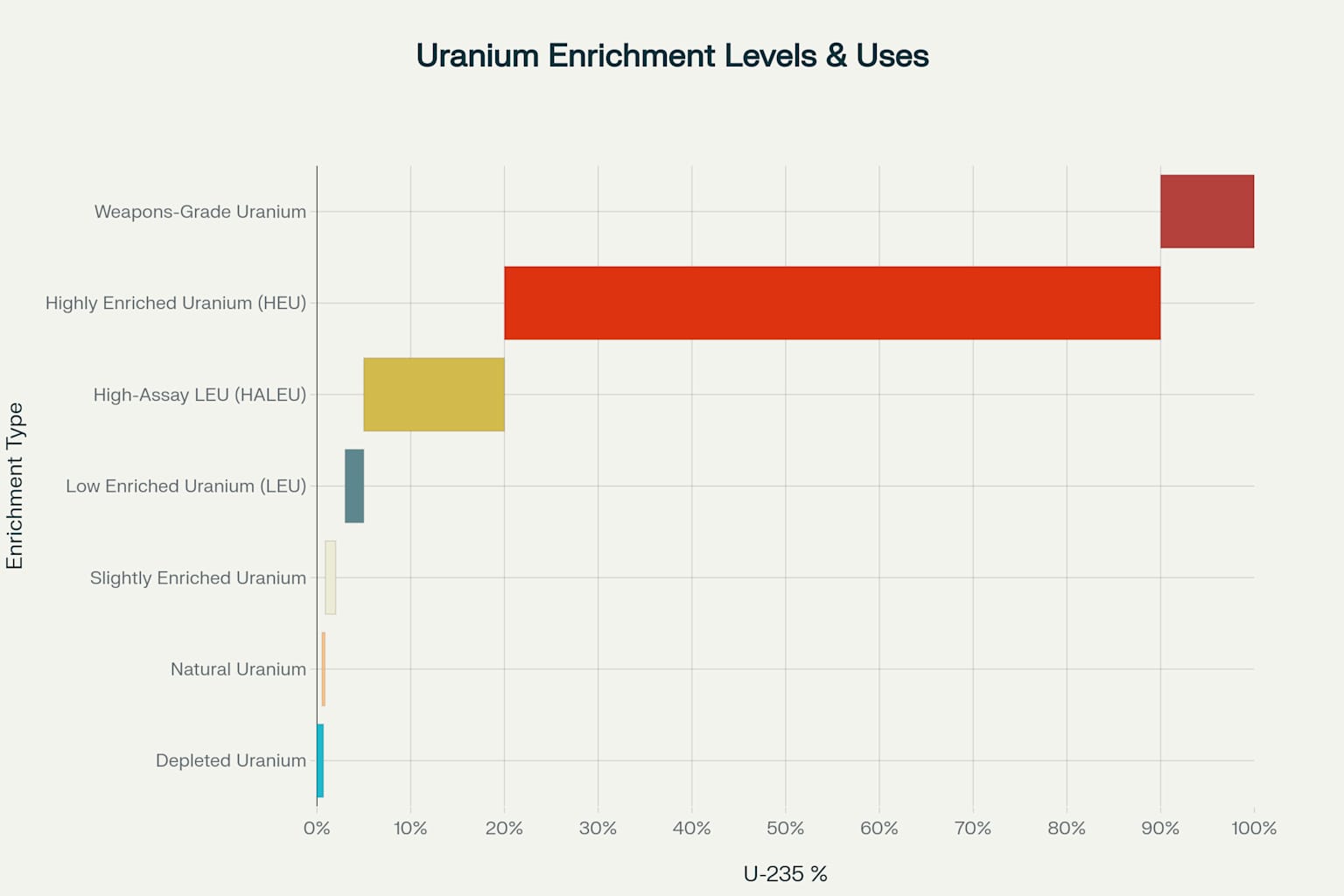
Uranium Enrichment Levels and Applications
What is Uranium Enrichment?
Uranium enrichment is the process of increasing the concentration of uranium-235 (U-235), the isotope that can sustain a nuclear chain reaction4. In nature, uranium consists of approximately 0.7% U-235 and 99.3% U-2385.
The enrichment process separates these isotopes to increase the percentage of U-235, making the uranium more suitable for various applications62. This separation is challenging because both isotopes have identical chemical properties and only differ slightly in their mass7.
Modern enrichment typically uses gas centrifuges that spin uranium hexafluoride (UF6) at high speeds, causing the heavier U-238 to move toward the outer walls while the lighter U-235 concentrates toward the center89.

Gas Centrifuge Cross-Section: How Uranium Isotopes Are Separated
The Enrichment Journey: From Mine to Fuel
The uranium enrichment process involves several steps before uranium can be used as fuel10. It begins with mining uranium ore from the ground, followed by milling to produce a concentrated powder called yellowcake (U₃O₈)6.
The yellowcake is then converted to uranium hexafluoride (UF6), a compound that becomes gaseous when heated, making it suitable for the enrichment process1112. This conversion is necessary because only UF6 can exist as a gas at reasonable temperatures, a requirement for the enrichment process11.
After enrichment, the UF6 is converted back to either uranium dioxide (UO2) for use in power plants or metallic form for research reactors and other applications125. The final steps include fuel fabrication, where the enriched uranium is formed into fuel pellets and assembled into fuel rods12.
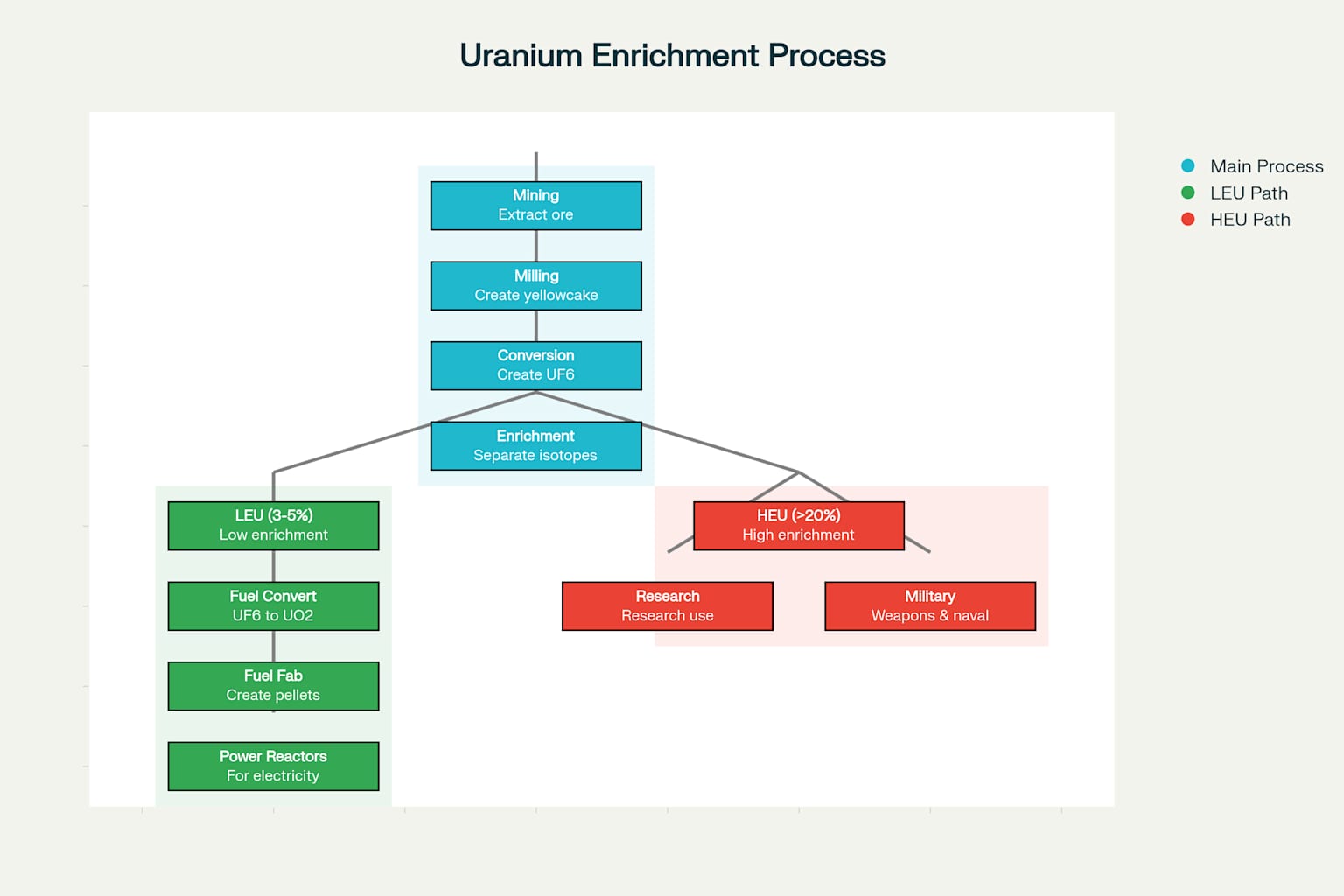
Uranium Enrichment Process: From Mine to Application
Low Enriched Uranium (LEU): Powering Our World
Low Enriched Uranium (LEU) contains less than 20% of the U-235 isotope1314. Most commercial nuclear power plants use LEU with enrichment levels between 3-5%312.
This level of enrichment is sufficient for sustaining the controlled chain reaction needed in power reactors but is not concentrated enough to be used in weapons415. LEU forms the backbone of the civilian nuclear industry, providing carbon-free electricity to millions of homes around the world16.
The relatively low concentration of U-235 in LEU means it requires a moderator (typically water) in reactors to slow down neutrons and facilitate the fission process515. Without moderation, LEU cannot sustain a chain reaction effectively17.
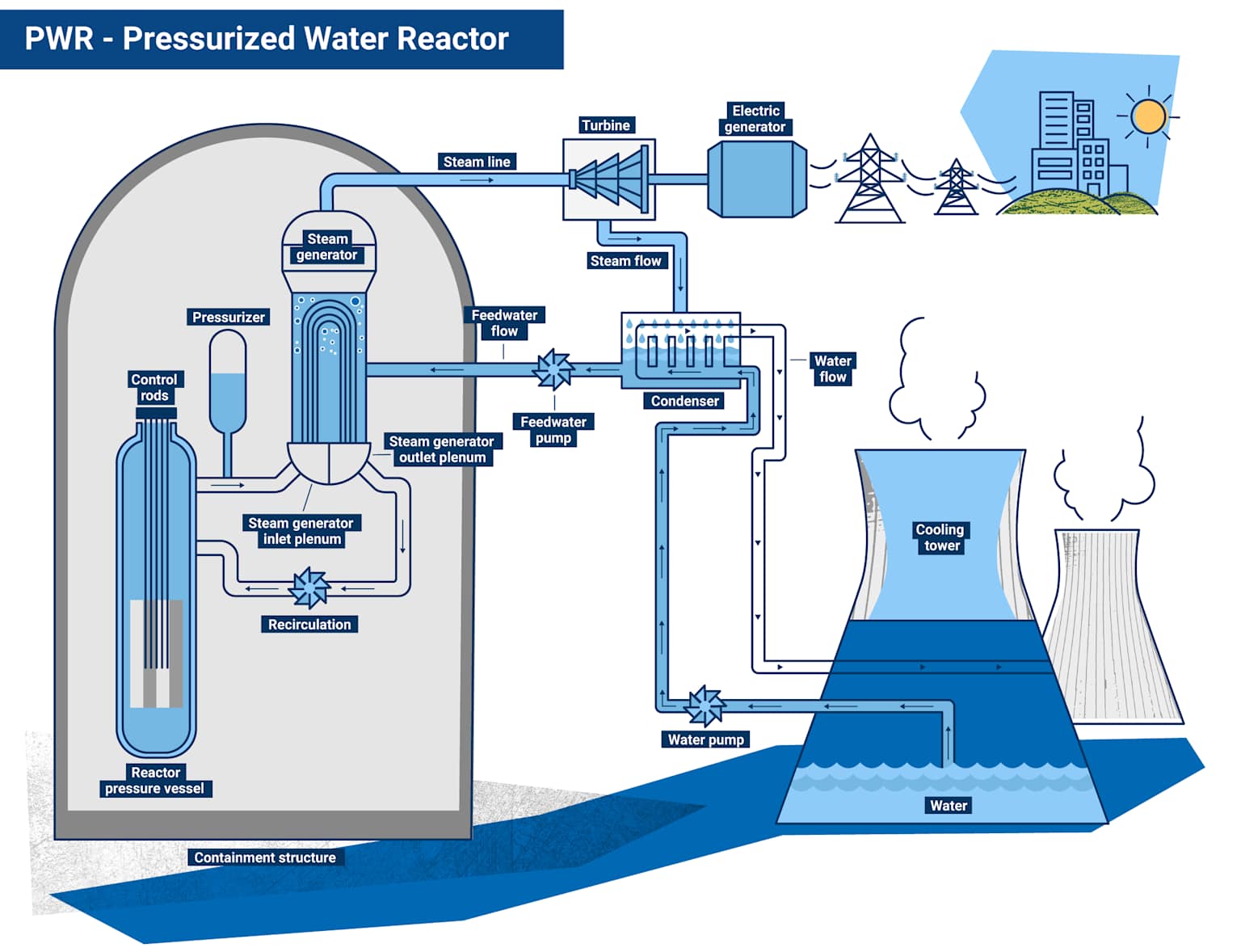
Diagram illustrating the components and operational flow of a Pressurized Water Reactor (PWR) nuclear power plant.
Highly Enriched Uranium (HEU): Specialized Applications
Highly Enriched Uranium (HEU) contains 20% or more of the U-235 isotope181. Most weapons-grade HEU is enriched to over 90% U-235, while research reactors and naval propulsion systems typically use HEU with enrichment levels between 20% and 90%35.
HEU’s higher concentration of U-235 makes it capable of sustaining a chain reaction without a moderator, which is why it’s suitable for compact applications like submarine reactors1819. However, this same property also makes it a proliferation concern20.
The International Atomic Energy Agency (IAEA) considers HEU a “direct use material” that could be used to manufacture nuclear weapons without further enrichment117. This classification subjects HEU to stricter security measures and international monitoring21.

Rows of gas centrifuges inside a uranium enrichment facility.
HALEU: The Middle Ground
High-Assay Low-Enriched Uranium (HALEU) is a category that sits between traditional LEU and HEU, with enrichment levels between 5% and 20%1622. The term “high-assay” refers to the higher concentration of U-235 compared to conventional reactor fuel23.
HALEU is becoming increasingly important for next-generation reactor designs, including small modular reactors (SMRs) and advanced reactor concepts2425. These advanced designs require higher enrichment to achieve smaller sizes, longer operating cycles, and better fuel utilization1622.
Currently, commercial-scale production of HALEU is limited, with only a few countries having the capability to produce it1626. The United States is working to establish domestic HALEU production capacity to support its advanced reactor development programs1624.
The Enrichment Process: Technical Details
The most common method for uranium enrichment today is gas centrifuge technology278. In this process, UF6 gas is fed into cylindrical rotors that spin at extremely high speeds, creating strong centrifugal forces159.
These forces push the heavier U-238 atoms toward the outer walls of the centrifuge while the lighter U-235 atoms concentrate toward the center78. The slightly enriched stream is then fed into the next centrifuge in a cascade arrangement, gradually increasing the concentration of U-235279.
Other enrichment methods have been developed throughout history, including gaseous diffusion (used extensively during the Manhattan Project), electromagnetic separation, and more recently, laser enrichment techniques2829. Each technology offers different advantages in terms of efficiency, energy consumption, and proliferation resistance30.

Large white cylinders for the storage and transport of uranium hexafluoride (UF6).
Physical Properties and Safety Considerations
LEU and HEU differ significantly in their physical properties and handling requirements2131. One critical difference is their critical mass—the minimum amount needed for a self-sustaining chain reaction3233.
For weapons-grade HEU (>90% U-235), the bare sphere critical mass is approximately 56 kilograms3435. By contrast, LEU used in power reactors cannot achieve criticality without proper moderation regardless of quantity3136.
From a radiation safety perspective, both LEU and HEU emit primarily alpha particles and low levels of gamma radiation3738. This makes them relatively safe to handle from an external radiation standpoint, but they pose serious health risks if ingested or inhaled2139.
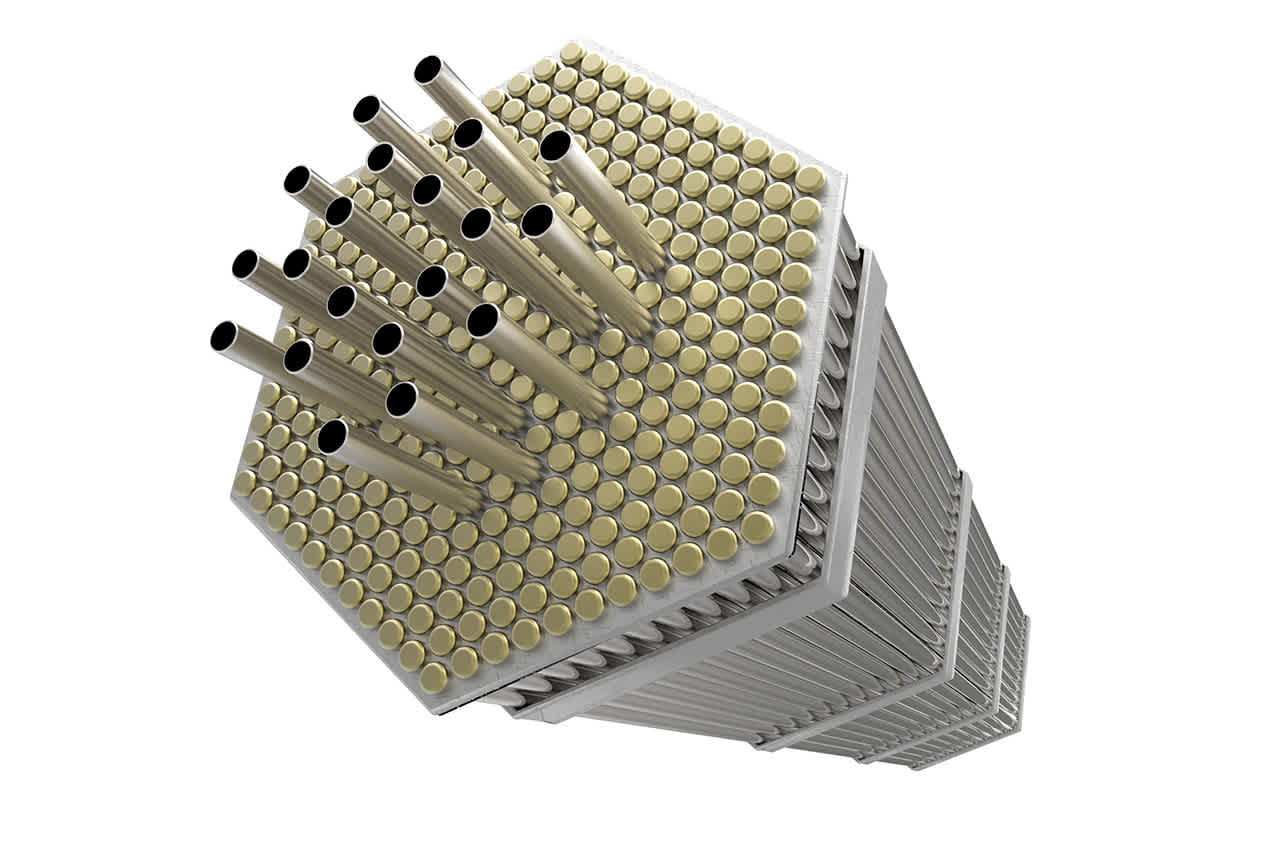
A nuclear fuel assembly showing the arrangement of individual fuel rods and control rod guide tubes.
Applications and Use Cases
LEU finds its primary application in commercial nuclear power generation, providing about 10% of the world’s electricity1640. Most of the approximately 440 nuclear power reactors operating worldwide use LEU fuel402.
HEU has historically been used in research reactors, naval propulsion systems (submarines and aircraft carriers), and weapons programs1819. Many research reactors were originally designed to use HEU because it allows for smaller core sizes and higher neutron fluxes4142.
There’s a global trend toward converting research reactors from HEU to LEU fuel to reduce proliferation risks4243. The Global Threat Reduction Initiative has successfully converted many research reactors worldwide from HEU to LEU fuel over the past decades4344.

Diagram showing nuclear fuel pellets contained within fuel rods, bundled together as a nuclear fuel assembly.
Fuel Fabrication and Reactor Use
Once uranium is enriched to the desired level, it must be converted to a form suitable for use in reactors1210. For most commercial reactors, this means uranium dioxide (UO2) fuel pellets stacked inside zirconium alloy tubes to form fuel rods4045.
These fuel rods are then bundled together into fuel assemblies that are loaded into the reactor core451. A typical fuel assembly for a pressurized water reactor contains around 200-300 fuel rods and remains in the reactor for 3-5 years4012.
The enrichment level directly affects how long the fuel can remain in the reactor before needing replacement162. Higher enrichment generally allows for longer operating cycles and more efficient fuel utilization2425.
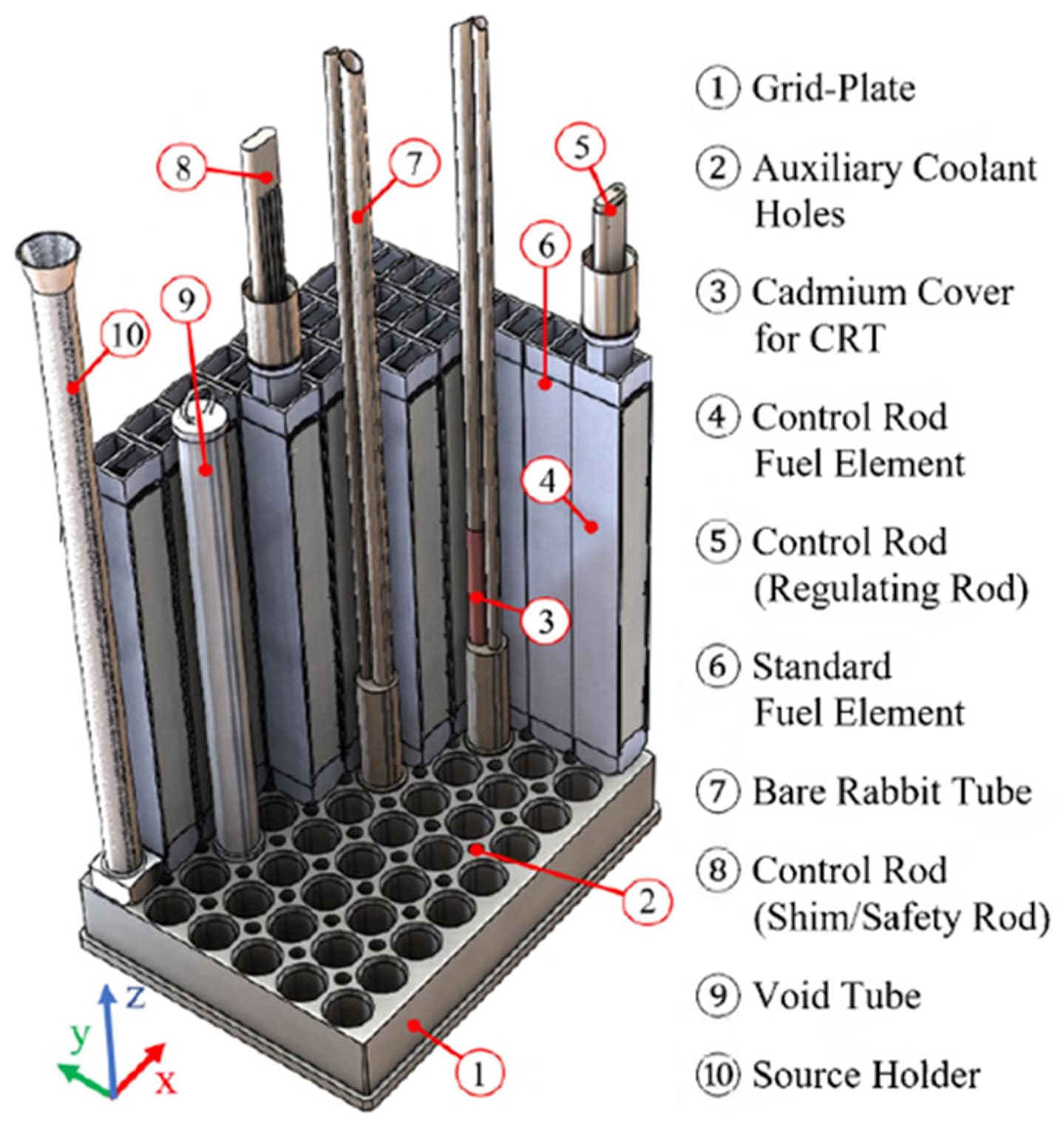
A detailed diagram of a nuclear reactor fuel assembly, showing components such as fuel elements and control rods.
Global Security and Nonproliferation
The distinction between LEU and HEU is central to international nuclear nonproliferation efforts1746. Because LEU cannot be used directly for weapons, its production and use are less restricted than HEU417.
The international community, led by organizations like the IAEA, works to minimize the civilian use of HEU and encourage the conversion of facilities from HEU to LEU2043. These efforts aim to reduce the global stockpile of weapons-usable material4344.
Since the end of the Cold War, significant quantities of weapons-grade HEU have been downblended to LEU for use in civilian power reactors through programs like the U.S.-Russia Megatons to Megawatts Program4547. This process effectively transforms potential weapons material into peaceful energy sources47.
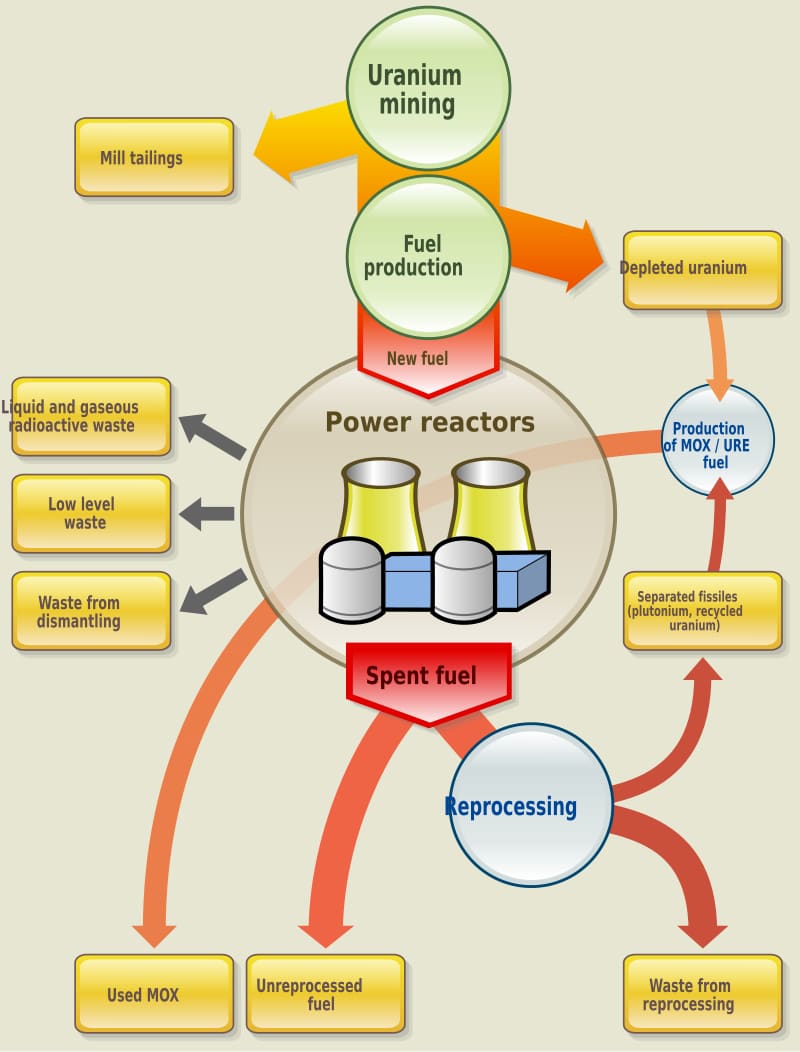
Diagram illustrating the complete nuclear fuel cycle, from uranium mining and fuel production to power generation and waste management.
Economic and Political Dimensions
The economics of uranium enrichment influence global nuclear policy and energy decisions4849. The enrichment market is dominated by a few major players, including companies from the United States, Russia, France, and China5051.
Geopolitical tensions can significantly impact uranium enrichment markets and supply chains5152. Recent conflicts, such as Russia’s invasion of Ukraine, have highlighted vulnerabilities in the global supply of enriched uranium5153.
Countries pursuing nuclear energy must decide whether to develop domestic enrichment capabilities or rely on international markets4654. This decision balances energy security concerns against nonproliferation goals and economic factors4955.
Future Trends and Innovations
The uranium enrichment landscape continues to evolve with technological innovations and changing energy needs5625. Laser enrichment technology, such as SILEX (Separation of Isotopes by Laser Excitation), offers potentially more efficient and less energy-intensive enrichment methods2956.
The growing interest in advanced reactor designs is driving demand for HALEU, creating new market opportunities and challenges2524. Countries are investing in expanding enrichment capacities to meet projected increases in nuclear energy generation5726.
Environmental considerations are also shaping the future of enrichment technologies, with research focusing on reducing waste and improving efficiency5839. New processes are being developed to better recover and reuse materials from the enrichment process, promoting sustainability5859.
Conclusion
Understanding the differences between LEU and HEU is essential for navigating discussions about nuclear energy, nonproliferation, and global security34. These distinctions go beyond simple percentages, affecting everything from reactor design to international relations217.
As the world continues to seek clean energy solutions while addressing security concerns, the role of uranium enrichment—and the balance between LEU and HEU applications—will remain a critical consideration in global energy and security policies5357. The trend toward utilizing LEU wherever possible while minimizing HEU use represents an important step in harnessing nuclear technology’s benefits while mitigating its risks4244.
The future of uranium enrichment technology will likely focus on developing more efficient, proliferation-resistant processes that can meet growing energy demands while enhancing global security5630. Understanding these technical distinctions helps inform better policy decisions and public discourse around nuclear technology5446.
Footnotes
-
https://world-nuclear.org/information-library/nuclear-fuel-cycle/conversion-enrichment-and-fabrication/high-assay-low-enriched-uranium-haleu ↩ ↩2 ↩3 ↩4
-
https://world-nuclear.org/information-library/nuclear-fuel-cycle/conversion-enrichment-and-fabrication/uranium-enrichment ↩ ↩2 ↩3 ↩4 ↩5
-
https://academickids.com/encyclopedia/index.php/Enriched_uranium ↩ ↩2 ↩3 ↩4
-
https://www.globalsecurity.org/wmd/intro/u-enrichment.htm ↩ ↩2 ↩3 ↩4
-
https://geoinfo.nmt.edu/resources/uranium/enrichment.html ↩ ↩2
-
https://visionias.in/current-affairs/upsc-daily-news-summary/article/2025-03-31/the-hindu/science-and-technology/centrifuge-getting-to-the-good-uranium ↩ ↩2
-
https://enritec.com/technology/centrifuge-technology/ ↩ ↩2 ↩3
-
https://www.centrusenergy.com/learn-more/nuclear-fuel-cycle/enrichment/ ↩ ↩2 ↩3 ↩4 ↩5 ↩6
-
https://www.law.cornell.edu/definitions/uscode.php?width=840\&height=800\&iframe=true\&def_id=42-USC-703255188-1052308729\&term_occur=1\&term_src=title%3A42%3Achapter%3A23%3Adivision%3AB%3Asubchapter%3AVIII%3Asection%3A2297h%E2%80%9310a ↩
-
https://www.law.cornell.edu/definitions/uscode.php?width=840\&height=800\&iframe=true\&def_id=42-USC-703255188-1612258571\&term_occur=7\&term_src= ↩
-
https://www.cameco.com/uranium_101/fuel-processing/enrichment/ ↩ ↩2 ↩3
-
https://www.energy.gov/ne/articles/what-high-assay-low-enriched-uranium-haleu ↩ ↩2 ↩3 ↩4 ↩5 ↩6 ↩7
-
https://tutorials.nti.org/nuclear-101/uranium-enrichment/ ↩ ↩2 ↩3 ↩4 ↩5
-
https://en.wiktionary.org/wiki/highly-enriched_uranium ↩ ↩2 ↩3
-
https://sites.utexas.edu/nppp/files/2021/02/Navy-LEU-Fuel-RD-2021-Jan-2.pdf ↩ ↩2
-
https://nonproliferation.org/the-final-stretch-tackling-remaining-heu-challenges/ ↩ ↩2
-
https://www.numberanalytics.com/blog/heu-nuclear-criticality-safety-guide ↩ ↩2 ↩3
-
https://www.reddit.com/r/nuclear/comments/1gf4omj/what_does_highassay_mean_in_haleu/ ↩
-
https://www.certrec.com/blog/exploring-the-role-of-high-assay-low-enriched-uranium-in-nuclear-fuel-advancements/ ↩ ↩2 ↩3 ↩4
-
https://www.verifiedmarketreports.com/blog/the-top-7-trends-shaping-the-enriched-uranium-market/ ↩ ↩2 ↩3 ↩4
-
https://www.csis.org/analysis/fueling-future-recommendations-strengthening-us-uranium-security ↩ ↩2
-
https://www.nrc.gov/materials/fuel-cycle-fac/ur-enrichment.html ↩ ↩2
-
https://www.aumanufacturing.com.au/silex-tests-full-scale-laser-destined-for-uranium-enrichment ↩ ↩2
-
https://www.numberanalytics.com/blog/advanced-uranium-enrichment-techniques-nuclear-forensics ↩ ↩2
-
https://www.reddit.com/r/NuclearPower/comments/1ourgm/difference_between_low_enriched_uranium_and/ ↩ ↩2
-
https://armscontrolcenter.org/uranium-enrichment-for-peace-or-for-weapons/ ↩
-
https://www.mn.uio.no/fysikk/english/services/knowledge/radiation-and-health/chap03.pdf ↩
-
https://world-nuclear.org/information-library/nuclear-fuel-cycle/introduction/nuclear-fuel-cycle-overview ↩ ↩2 ↩3 ↩4
-
https://www.nucnet.org/news/agency-says-progress-made-globally-in-use-of-leu-for-research-2-2-2020 ↩ ↩2 ↩3
-
https://resources.inmm.org/annual-meeting-proceedings/authorities-activities-and-plans-minimization-high-enriched-uranium ↩ ↩2 ↩3 ↩4
-
https://www.iaea.org/newscenter/news/supporting-nuclear-non-proliferation-ghana-converts-research-reactor-from-heu-to-leu-fuel ↩ ↩2 ↩3
-
https://www.armscontrol.org/act/1998-08/features/heu-leu-u-swu ↩ ↩2 ↩3
-
https://www.nti.org/analysis/articles/evolution-multilateral-assurance-nuclear-fuel/ ↩ ↩2 ↩3
-
https://www.thirdway.org/blog/why-downblending-heu-is-vital-to-keep-us-advanced-nuclear-on-target ↩ ↩2
-
https://www.nei.org/resources/reports-briefs/economic-benefits-and-challenges-increased-enrich ↩ ↩2
-
https://siepr.stanford.edu/publications/working-paper/market-power-uranium-enrichment ↩
-
https://energynews.pro/en/enriched-uranium-geopolitical-tensions-and-supply-issues/ ↩ ↩2 ↩3
-
https://investingnews.com/geopolitical-risk-and-uranium-mining-a-quick-overview/ ↩
-
https://www.energy.gov/articles/cop28-us-canada-france-japan-and-uk-announce-plans-mobilize-42-billion-reliable-global ↩ ↩2
-
https://www.hoover.org/sites/default/files/uploads/documents/9780817949211_ch9.pdf ↩ ↩2
-
https://nuclearinnovationalliance.org/sites/default/files/2023-12/NIA HALEU Cost Report SPM (12_15_23).pdf ↩
-
https://thebreakthrough.org/issues/energy/will-laser-enrichment-be-the-future-of-nuclear-fuel ↩ ↩2 ↩3
-
https://world-nuclear.org/news-and-media/association-news/powering-the-future-highlights-from-world-nuclear-fuel-cycle-2025 ↩ ↩2
-
https://www.unlv.edu/announcement/office-economic-development/pioneering-unlv-research-makes-nuclear-fuel-processing ↩ ↩2
-
https://www.orano.group/en/nuclear-expertise/from-exploration-to-recycling/world-leader-in-recycling-used-nuclear-fuels ↩